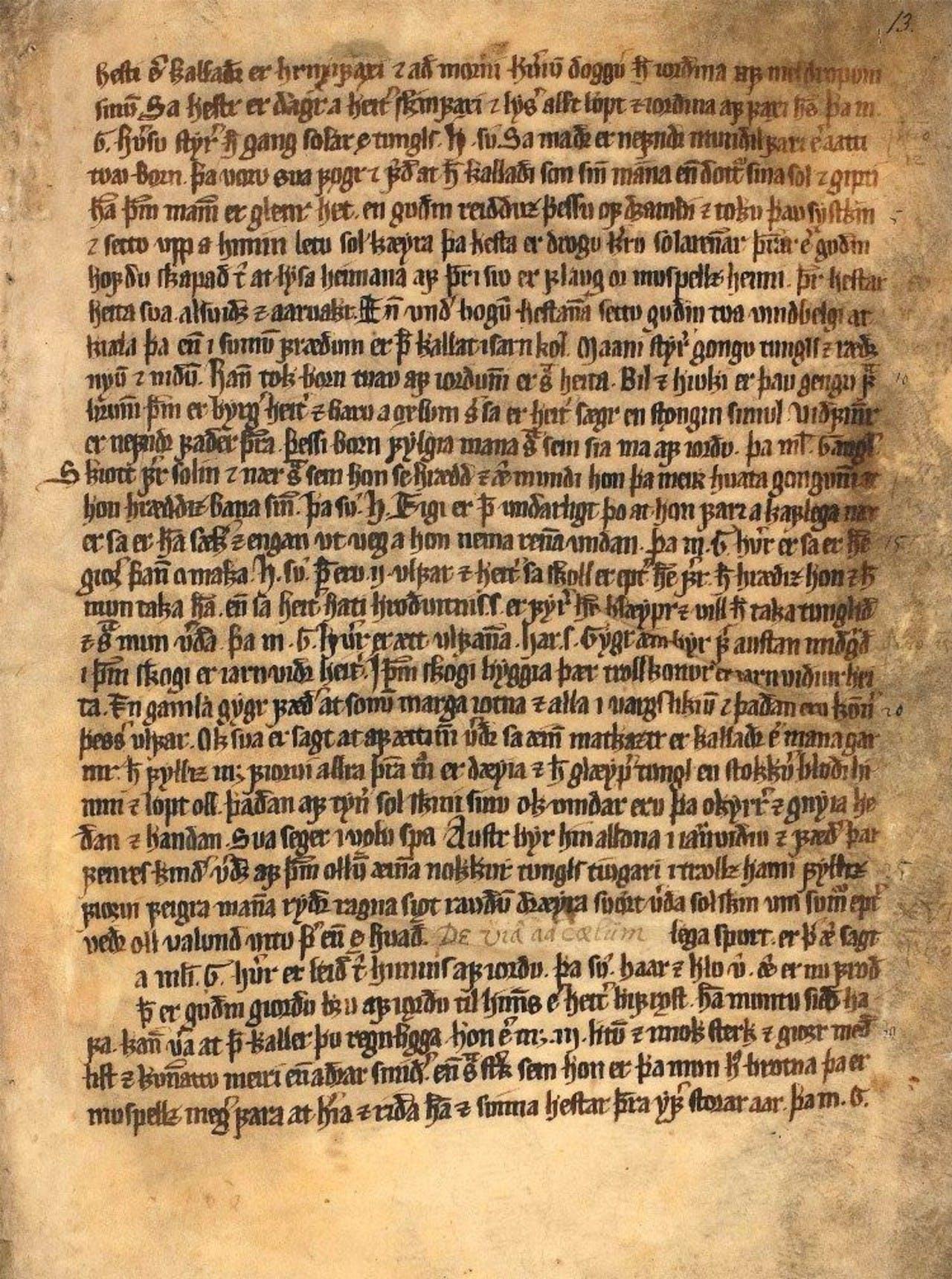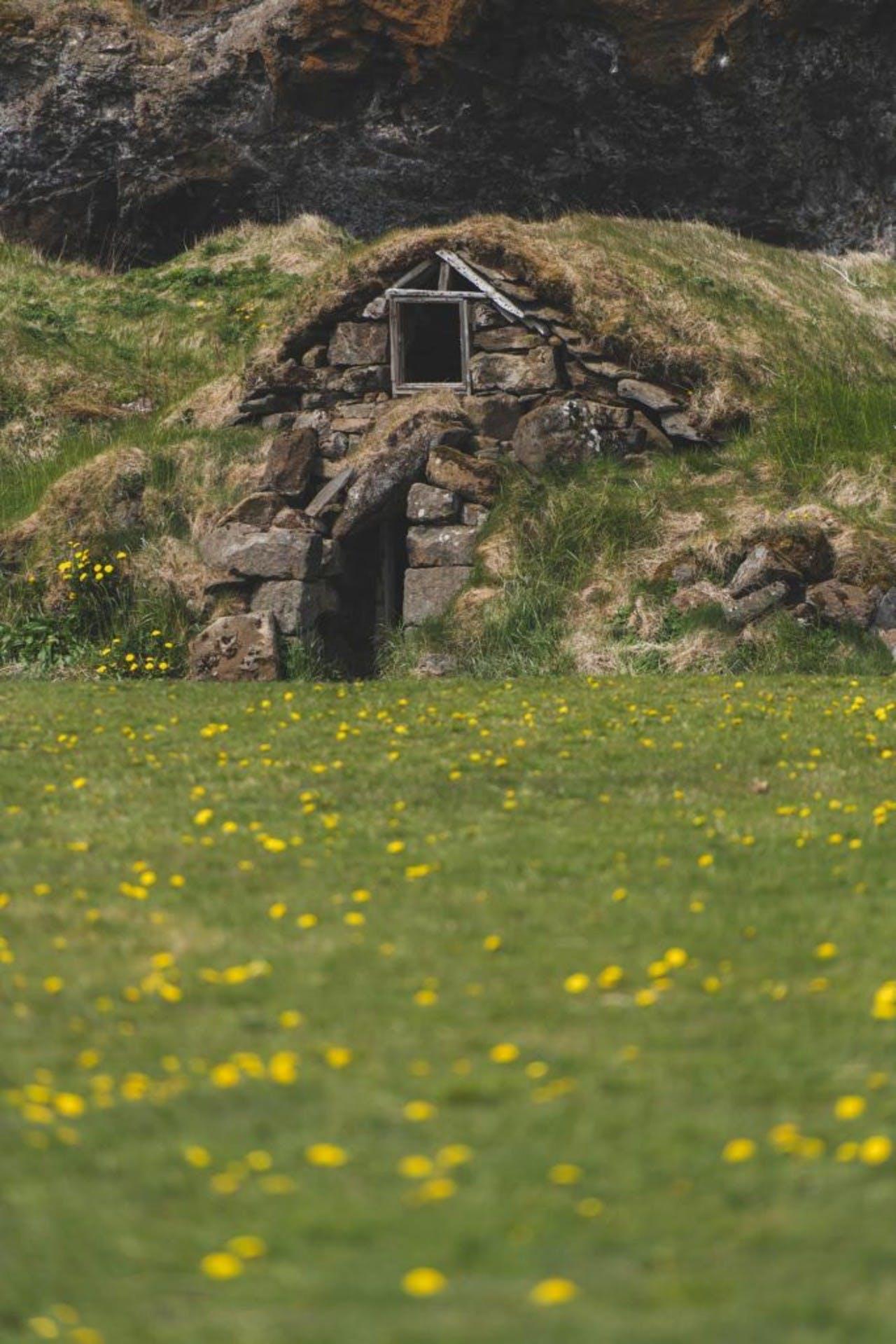History of the Icelandic Language
| All
If you are looking to travel back in time, all you have to do is speak some Icelandic; modern Icelanders are speaking the same language that their ancestors spoke, a language that has barely changed since the 13th century.
The original sagas can be understood by modern Icelanders, texts that were written hundreds of years ago!
The history of the language begins sometime in the 9th century, when Iceland was settled by Norwegian vikings who spoke a particular dialect of Old Norse. The oldest preserved texts found were written around 1100, the most famous of them being the famous Icelandic Sagas that everyone knows so well. Other preserved texts include poems and laws. The Old Norse version of the language turned into Old Icelandic around this time because of some Celtic influence and despite Danish rule in Iceland in later years, the language remained the same.

Codex Warmianus, an ancient Icelandic text
Icelandic went through phases just like any language, from the Common Nordic period to Old Norse, from Middle Icelandic to Modern Icelandic. The Common Nordic period lasted between the year 550 to 1050, when a common language was spoken throughout the Scandinavian countries as Denmark held a position of power. Then the period called Old Norse came along from 1050 to 1350, which is when Icelandic began to break away as its own language and develop, especially with the introduction of the Latin alphabet in the 12th century. Manuscripts and texts were created using Latin and the First Grammatical Treatise was written, containing the original characterization of Icelandic and its phonology, which is still available in Reykjavik today. If you are interested in viewing the manuscripts form the comfort of your own home, the University of Copenhagen has digitized many ancient manuscripts, including the Codex Warmianus, picture in this article.

Traditional Icelandic turf house
The only changes that have occurred for the Icelandic language involve some pronunciation and vowel shifts, sometime between the 12th and 16th century.
The Middle Icelandic period is the time between 1350 and 1550, when the Danish Crown began to take more power in Scandinavia and Icelandic underwent some changes, separating even further from Norwegian. And lastly, the Modern Icelandic period begins with the Lutheran Reformation and introduction of printing, when the most recent form of the language was formalized. And during the 18th century, the government created policies to ensure linguistic purity, especially in the situations when new words needed to be made to include modern concepts without borrowing from other languages.
The only changes that have occurred for the Icelandic language involve some pronunciation and vowel shifts, sometime between the 12th and 16th century. This creates a rare situation that allows ancient Icelandic texts and ruins to be read quite easily and connects Icelanders very directly to their ancestors. For example, the original sagas can be understood by modern Icelanders, texts that were written hundreds of years ago!
Whether you are in Iceland, or thinking about coming to Iceland, browse our range of tours and get a taste of the land conquered, and respected by the vikings for over a thousand years!
Keep me informed about the Icelandic Mountain Guides Blog
Outdoor adventure in Iceland is our specialty. Subscribe to our free monthly newsletter to learn when to go, what to do and where to have the best adventures in Iceland.